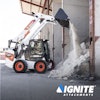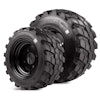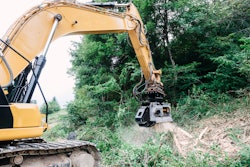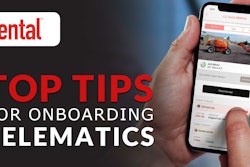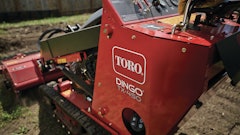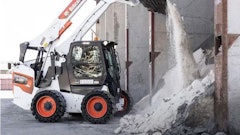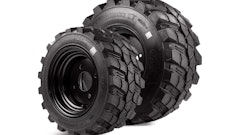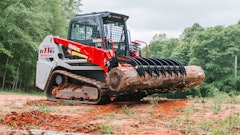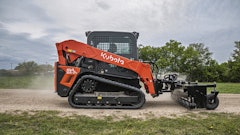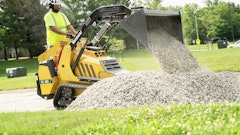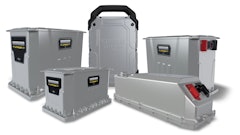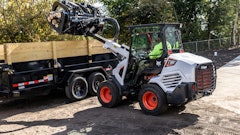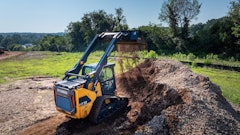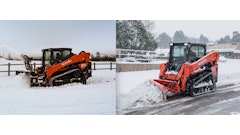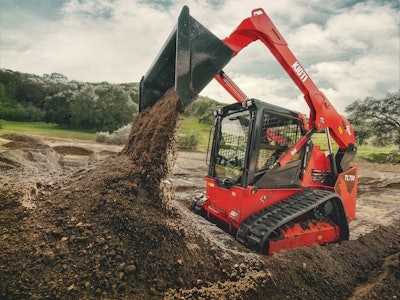
Finding the right compact track loader (CTL) for your fleet can be a daunting task, but with the right approach, you can make an informed decision. Before making a major equipment purchase, it's crucial to gather all the necessary information to help you make the right choice. Here are six essential questions to answer before purchasing a compact track loader.
1. What Do You Need?
Start by asking yourself a simple question, “What do I really need?” Take the time to assess not only your daily needs but also how your new machine could help you reach your long-term goals.
When evaluating your options, consider the CTL size that best fits your needs. If you’re weighing compact against larger track loaders, note that rated operating capacity and horsepower are key indicators of a machine’s performance.
Think about the materials you will be working with, and the lift capacity required to move them effectively.
Whether moving soil or prepping your next construction site, be aware of specific tasks you constantly repeat. For example, frequent truck loading would indicate you need a vertical lift machine for the increased reach at max lift height.
2. What Features Are a Priority?
While individual priorities may vary, consider what features are most important to you and your team. You may prioritize control features, as they are essential for overall productivity.
A feature you may want to consider is pilot hydraulic joystick controls. They provide precise control on loader functions while also providing haptic feedback to an operator, thus giving the operator a better feel of the machine as if it is an extension of themselves.
Auxiliary controls built into the joysticks simplify attachment use, providing operators with more intuitive controls for attachment use. Self-leveling is another valuable feature for truck-loading applications. This feature keeps the bucket level while lifting the arms, helping to ensure material stays in the bucket.
Operator comfort is paramount for safety. Operators who are comfortable and well-rested are less likely to make mistakes caused by fatigue or discomfort. An ergonomic seat and intuitive controls can enhance operator comfort and reduce fatigue. Additionally, a rearview camera display can provide increased operator awareness of their surroundings
3. What Attachments or Implements Will You Need?
The CTL is often referred to as a "jack of all trades," but its versatility is only amplified by its attachments. These attachments enable operators and owners to perform a wide range of tasks beyond just lifting and carrying on the jobsite. It’s important to verify the attachments or implements you use are compatible with your CTL.
Most CTLs on the market use a standardized, quick-attach system, but verifying that the attachments you choose meet the specific hydraulic flow rate and pressure requirements of your machine is critical. Compare these specifications with the hydraulic capabilities of your CTL to guarantee optimal performance.
If you frequently use different attachments for tasks, auxiliary hydraulic performance should be a top priority. For some attachments such as snowblowers or angle brooms, you will need an electrical connector on the machine to run the third-function attachments.
4. Should You Rent or Buy an Attachment?
When considering the need for multiple attachments, weigh the advantages and disadvantages of renting versus buying. Renting attachments for your CTL can offer short-term savings, with lower initial investment and minimal maintenance costs. This approach also provides flexibility without the commitment of a purchase. Operators can expand their offerings and scope of work with access to various attachments, potentially increasing revenue.
However, buying attachments has its own set of benefits, especially if you have specific tasks that you will regularly perform. In this case, purchasing can be more cost-effective in the long run by eliminating perpetual rental fees. Buyers can also customize attachments to suit their preferences. Additionally, business owners can often deduct depreciation on purchased equipment, providing tax benefits.
When making your decision, consider factors such as project duration, storage capacity and budget allocations. By carefully evaluating the pros and cons of renting versus buying attachments, you’ll be well-prepared to make an informed decision that aligns with your needs and goals. 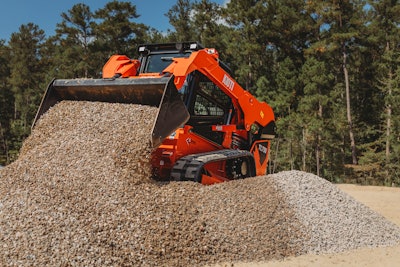 When making your decision, consider factors such as project duration, storage capacity, and budget allocations.KIOTI
When making your decision, consider factors such as project duration, storage capacity, and budget allocations.KIOTI
5. What Can You Afford?
Now that you have a clear understanding of your needs, you’re ready to make an informed decision that aligns with your budget. When evaluating your savings, factor in allocations for maintenance and repair costs down the line. The total cost of ownership is often overlooked, so don’t forget to include costs for fuel, insurance, and any added attachments.
Based on your financial situation, you could consider taking out a loan, leasing, or paying for your machine in full. Many dealers offer financing programs with customizable solutions, such as incentives or down payment options. Familiarize yourself with their programs and compare warranty terms and coverage as you shop around.
When deciding between new and used equipment, consider the pros and cons. While new CTLs are typically more expensive, you’ll reap the full benefits of the warranty and have access to the latest features. On the other hand, used machines can be more affordable. However, be sure to pay close attention to the maintenance history and the machine's condition.
6. What to Look for in a Dealer?
Your relationship with your equipment dealer just began when they handed you the keys to your CTL. Whether proximity, inventory, or personal compatibility is your priority, make sure you’re working with a trained expert who can provide ongoing support.
Discover the dealer’s offerings for after-sale assistance, including routine maintenance and repairs. Dealers provide essential technical and maintenance information, including the machine's limits and safety features. Some even offer training programs to help new operators quickly learn the full capabilities of their CTL.
CTLs are designed to be tough, dependable and durable machines that can help operators push through their toughest work. By doing your research, comparing models and working with a dealer you can trust, you’ll set yourself up for success. With careful consideration and intentionality, you will make an informed decision to find the right CTL to support your bottom line.

